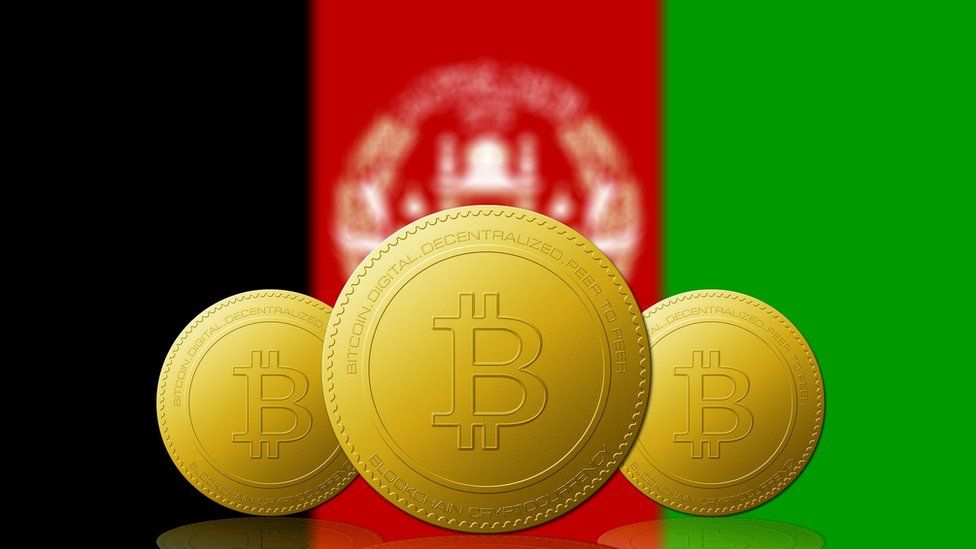US sanctions, failing banks, and the drying up of foreign aid and cash transfers since the Taliban takeover have left Afghanistan’s economy in tatters. Crypto is coming to the rescue.
Following the Taliban takeover in August last year, 22-year-old Farhan Hotak from the province of Zabul in southern Afghanistan was left with no cash in hand.
Mr Hotak’s sole source of income became a few hundred dollars of Bitcoin in a virtual wallet. After turning it into a traditional currency, Hotak managed to flee to Pakistan with his family of ten.
“After the Taliban takeover, crypto spread like wildfire over Afghanistan,” he said. “There is almost no other way to receive money”.
Mr Hotak and his friends use Binance’s P2P crypto exchange, which allows them to buy and sell their coins directly with other users on the platform. Finding temporary refuge in Pakistan, Mr Hotak is trading Bitcoin and Ethereum again and is now back traveling through Afghanistan, vlogging and teaching people about cryptocurrencies – digital money with no physical form that can have value.
Fans of cryptocurrencies say they are the future of money and will stop people having to rely on banks. And in Afghanistan, it’s banks that have stopped working, causing people to turn to cryptocurrency not just to trade, but to survive.
Google trends data shows that web searches in Afghanistan for “bitcoin” and “crypto” increased in July just before the takeover in Kabul, while Afghans queued outside the banks in fruitless attempts to withdraw cash.
After the Taliban takeover in August 2021, the use of crypto rose sharply. Last year, the data firm Chainalysis gave Afghanistan a rank of 20 out of the 154 countries it evaluated in terms of their crypto adoption.
Just one year before, in 2020, the company considered Afghanistan’s crypto presence to be so minimal as to entirely exclude it from its ranking.
According to Sanzar Kakar, an Afghan American who in 2019 created HesabPay, an app that helps Afghans transfer money using crypto, the country’s “crypto revolution” is a result of the US sanctions against the Taliban and Haqqani group, who are now in power.
The sanctions have meant that transactions with Afghan banks have all but stopped. The US has seized $7.1b (£5.4b) worth of assets from the Afghan central bank and ended transfers of US currency. Companies in Poland and France contracted to print the Afghan currency ended shipments.
The Society for Worldwide Interbank Financial Telecommunication, known as the Swift system, which underpins international financial transactions, suspended all services in Afghanistan.
The liquidity crisis that followed meant that commercial banks couldn’t lend money, and retail customers couldn’t take their own money out of banks.
An already war-devastated economy with 80% of its GDP coming from foreign aid and donors, Afghanistan was left on the verge of collapse.
“We’re using crypto to try to solve this problem, that 22.8 million Afghans are marching toward starvation, including one million children that might starve to death this winter,” said Mr Kakar.
An app like Mr Kakar’s HesabPay allows instant transfers of funds from one phone to another without touching banks, the Afghan government, or Taliban. In the three months since its launch, the app had over 2.1 million transactions and 380,000 active users.
Aid organisations have also caught on to crypto’s potential in Afghanistan.

In 2013, Roya Mahboob founded Digital Citizen Fund, an NGO to teach computer programming and financial literacy to young Afghan women. The organisation had 11 women-only IT centres in Herat and another two in Kabul, where 16,000 women were taught everything from Windows software to robotics.
After the Taliban takeover, the group refocused its efforts to provide young women cryptocurrency training via Zoom video calls.
Digital Citizen Fund also started sending money to Afghan families via crypto, to help them provide food and housing, and in some cases, to help people get out of the country.
“Crypto has been critical for Afghanistan in the last six months. Everybody’s talking about trading. It got to a point where I got on a plane to Kabul and people were talking about Dogecoin and Bitcoin,” Ms Mahboob told the BBC.
Gaining ground in Afghanistan are the so-called “stablecoins,” virtual coins pegged to the US dollar, eliminating the volatility usually associated with crypto. The recipients then convert the stablecoins to the local currency at money exchanges.
They can also be sent directly to recipients, without the need for a bank account.

But there are barriers that make access to cryptocurrency more difficult for an average Afghan.
Access to the internet, while growing, remains low. There were 8.64 million internet users in Afghanistan in January 2021, according to DataReportal.com.
Unreliable electricity poses another major issue, as power outages are common. The country’s new Taliban rulers have been accused of not paying Central Asian electricity suppliers. And with the banking system paralyzed, many Afghans don’t have the means to pay their power bills.
Education is also key when it comes to crypto. Mr Hotak said he found reliable online communities on Telegram, WhatsApp and Facebook that give him trading tips and offer him sound trading advice. But there is also plenty of misinformation about crypto easily found online.
Despite the steep learning curve and several barriers to entry, within Afghanistan using crypto is seen as an improvement on the status quo.
But cryptocurrencies are not a silver bullet, said. Nigel Pont, a senior advisor at HesabPay. Unlocking the restraints imposed on Afghanistan’s financial situation is crucial to alleviating the growing poverty, he said.
“It’s the failures of the traditional centralised fiat system that are starving Afghanistan.”
In February, US President Joe Biden signed an executive order splitting $7 billion in frozen Afghan funds between aid for Afghanistan and US victims of 9/11, who in 2010 sued the Taliban and al-Qaeda for their role in the attack.
Though reports have said the administration would direct the other half of frozen Afghan foreign reserves to humanitarian groups, the executive order does not specify how the money will be released, and it remains unclear.
Most people in Afghanistan are still waiting for liquidity and unemployment relief, and the United Nations warned the country could approach a “near-universal” poverty rate of 97% by the middle of 2022. Millions remain on the brink of famine in the country.
“We want the US sanctions to be lifted so we can trade, so we can see our families from abroad. We want the frozen funds to be given to the families in Afghanistan,” Mr Hotak said.































